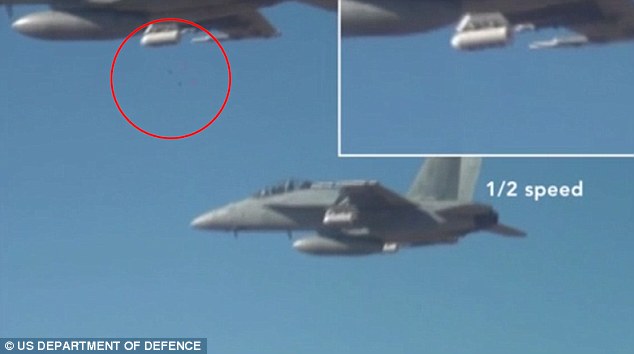Pentagon Tests Swarm Of Drones For Military Reconnaissance

The rise of the weaponised Internet of Things could start here
The Pentagon has successful tested a swarm of 103 micro-drones designed t conduct a range of military operations, such as low-altitude reconnaissance.
Dubbed Perdix, supposedly after the nephew of Greek mythology’s craftsman Daedalus, the drones were originally designed by engineering students from the Massachusetts Institute of Technology (MIT), before being modified for military use, and are cheap, lightweight machines designed to work in large swarms as opposed to the smart, expensive and heavily armed drones normally deployed by the US and UK militaries.
The Pentagon tested the drone swarm through an exercise ran by the Naval Air Systems Command and the Strategic Capabilities Office (SCO), in which the drones were dropped from three F/A-18 Super Hornets jet fighters from specifically designed canisters attacked to the underside of the aircrafts’ fuselages.
Swarm mentality
The Perdix drones operate as a swarm in which they communicate with each other adapting flying formations in response to general instructions rather than individual orders. As the swarm effectively as a pseudo single unit sharing compute resources, they can carry out tasks that would normally require a single, more expensive and technologically advanced drone.
“Due to the complex nature of combat, Perdix are not pre-programmed synchronized individuals, they are a collective organism, sharing one distributed brain for decision-making and adapting to each other like swarms in nature,” said SCO director William Roper. “Because every Perdix communicates and collaborates with every other Perdix, the swarm has no leader and can gracefully adapt to drones entering or exiting the team.”
Other than specifying general use military tasks, notably surveillance due to the cameras the drones sport the US Department of Defence did not go into details on how the drones would be used in the military. But, given they fly in a swarm formation, there’s a strong change they could be used to overwhelm the radar and air defences of adversarial forces or potentially carry small explosive ordnance.
The rise of drone across the military, commercial and consumer sectors appears to be unstoppable, yet there are persistent worries about the security risk these flying Internet of Things devices can pose if hackers can breach them.
What do you know about the Internet of Things? Take our quiz!